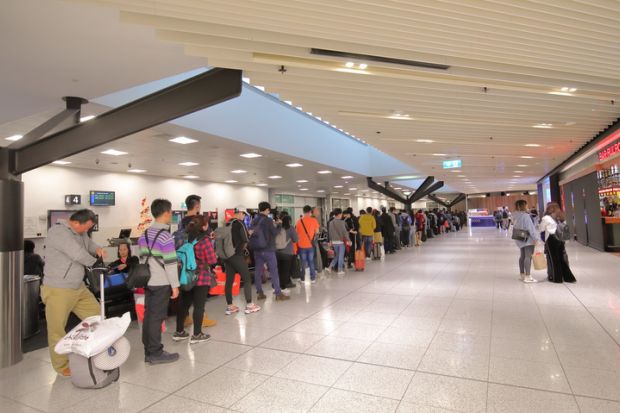Australia still has a “very long way to go” to fix a “myriad of problems” in its gridlocked visa processing system despite a A$41 million (£23 million) cash injection, according to an immigration expert.
The government's budget on 25 October confirmed that the extra money has been made available to help maintain progress in tackling the backlog that has prevented academics and students alike from relocating to the country.
Former civil servant Abul Rizvi, who served as deputy secretary of the then immigration department for almost two decades before completing a doctorate on migration, said that the problems were partly cultural: “Visa-processing staff have been treated as second-class for almost a decade,” wrote Dr Rizvi in public sector news site The Mandarin.
He said morale among staff was “rock-bottom”, partly because “a largely ineffective law-enforcement culture rather than a nation-building and client-service culture” had been imposed on them.
Long-term additional funding was also needed to enable the home affairs department to put in place a “more fulsome plan to fix the visa system”.
Dr Rizvi told Times Higher Education that the extra money was “very small” compared with the A$875 million budget cut inflicted on the department by the former government. The boost is restricted to the current financial year, with no extra money allocated in the “out years” after mid-2023.
A “clear indication” of subsequent funding would have allowed officials to undertake “really good long-term planning”, he said. “Leaving that until the May [2023] budget means the department’s leadership will go through lots of uncertainties. What do we do? How do we manage this? Even the extra staff they’ve got – will they be able to afford to keep them next year?”
In a pre-recorded address to the Australian International Education Conference in Queensland on 21 October, education minister Jason Clare said that the government was “breaking the back of the backlog” after adding more than 180 staff to help process visas. “In May, more than 130,000 students were waiting overseas for their visa to be processed,” Mr Clare said.
“The number of students waiting overseas for visas is now down to just over 40,000. We have cut the waiting list by two-thirds.”
In all, the government plans to boost its visa processing teams with 500 extra staff this financial year. Dr Rizvi said hiring that many new staff was “a big enough challenge in itself”, given current skill shortages, and the department would be “drowning” without them.
He said allocating more money in the short term “probably wouldn’t have made sense. You just can’t hire and train that many staff that quickly.”
But the government’s failure to provide security in the longer term – something that used to be done routinely, under a “resource agreement” that guaranteed funding in line with the number of visas processed – left the department’s leaders second-guessing Canberra’s intentions.
Dr Rizvi said he was “reasonably confident” that more money would be forthcoming next May, and the department’s current leaders probably felt likewise. “But managing an organisation based on those sorts of assumptions is high-risk stuff.”
He said that the extra staff had made real progress in processing the “low-hanging” fruit of the visa backlog, but more complicated cases had often been left unaddressed. “The backlog is just so big that getting control of them, at a time when demand is rising rapidly, is really hard. They’re processing them faster, and the backlogs are slowly reducing – very slowly, mainly because demand is rising very quickly as well.”




